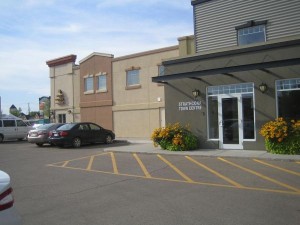Shaken baby syndrome or SBS is considered to be a form of child abuse. SBS refers to brain injury caused due to vigorous shaking or slamming a baby against an object. Shaken baby syndrome is also labelled as shaken impact syndrome due to the fact that the effects of shaking a baby are equivalent to hitting the baby against a wall or object. It is also termed as ‘intentional head injury’ or ‘abusive head trauma’.
Shaken baby syndrome often occurs due to stress or anger when a baby will

not stop crying. It is therefore, ideal that the caregiver learns how to control his or her anger and choose child care providers carefully.
SBS normally occurs in children under 3 years of age. It usually occurs in younger children who are under 1 year old but even children under 5 years of age can be affected.
How does the brain injury occur?
When a baby is shaken or slammed against an object, there is a lot of uncontrolled movement. This causes damage to the blood vessels, brain tissue and nerves as they get torn due to the force of the jolting movement. If the child is thrown towards or slammed onto an object or wall with force, the brain tissue starts to swell and bleed. The bleeding may cause hemorrhage and bleeding around the eyes, namely, retinal hemorrhaging. This usually results in blindness in children. Brain damage is also caused due to the lack of oxygen received by the brain during the trauma that causes the brain tissues to swell up.
Infants and young children are more susceptible to brain injury when shaken or thrown because:
- They have large and heavy heads that are not proportional to their body size
- The blood vessels in their brains are very delicate
- Their neck muscles are frail and weak therefore, they are unable to hold the head in its place firmly
Symptoms and other complications
Severity of the damage depends on the age of the child, the amount of force used and the duration of shaking. The following are the symptoms, injuries and disabilities that may result from shaken baby syndrome:
- Vomiting
- Tremors
- Lethargy
- Loss of appetite
- Hearing loss
- Loss in vision. This may be complete or partial blindness
- Disabilities related to speech and learning
- Paralysis
- Seizures
- Swallowing defects
- Autism
- Mental retardation. This may be mild, moderate or even severe.
- Problems related to behavior and social life
- Irritability
- Coma
- Brain death
- Death
Treatment
If you suspect that your baby has been shaken due to apparent injuries or changes in behavior such as refusing to eat, breathing problems, vomiting etc., it is important that you call for emergency help immediately.
- If your child is vomiting, gently roll him while securing the neck so that the baby does not choke in the vomit or is having difficulty in breathing while vomiting.
- Do not shake the baby if he is not breathing as this will just aggravate the condition. After you have called for help, begin CPR and continue till help arrives.
Long-term, severe damages cannot be reversed, therefore it is vital that you familiarize yourself with the detrimental effects of shaking a baby and make sure that your health care providers are knowledgeable about it as well. Remember, no matter how frustrated or upset you are, do not shake your baby and the results maybe damaging to the babies health and your conscience as well.
Learn More
To learn more about shaking baby syndrome and how to prevent it take a workplace approved childcare first aid program. To register for the program click here.
